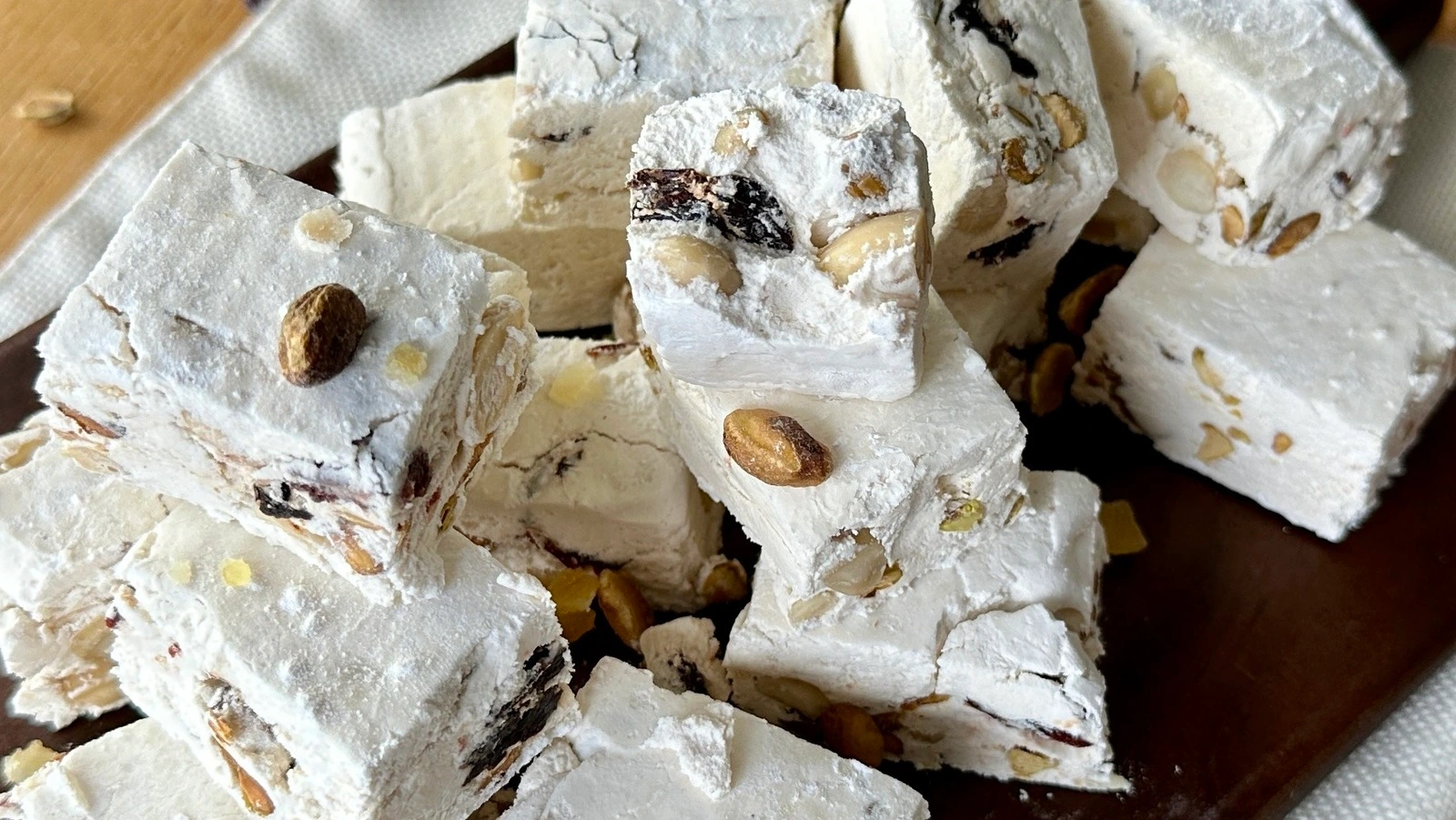Indulging in a delectable treat is an experience that transcends mere consumption—it’s a journey of flavors, textures, and memories.
Among the plethora of confectioneries, Italian nougat candy stands out as a timeless delight, blending sweetness with a hint of nutty goodness.
Crafting this culinary gem at home not only fills the air with aromatic bliss but also offers a rewarding sense of accomplishment.
Join me as we embark on a delightful adventure of creating homemade Italian nougat candy, step by step.

Unveiling the Ingredients:
To embark on our sweet escapade, let’s gather our culinary companions:
Essential Ingredients:
Sugar:
The foundation of sweetness, lending structure to our nougat.
Honey:
Infusing a delicate floral essence and contributing to the candy’s smooth texture.
Egg Whites:
Providing the airy lightness that characterizes traditional nougat.
Almonds:
Adding a delightful crunch and nutty undertones.
Pistachios:
Introducing vibrant color and a contrasting flavor profile.
Vanilla Extract:
Elevating the flavor profile with its aromatic richness.
Optional Additions:
Candied Fruit:
For a burst of tangy sweetness amidst the nougat’s creamy texture.
Hazelnuts:
Offering a robust nuttiness and enhancing the depth of flavor.

The Art of Preparation:
Prepare the Pan:
Line a baking pan with parchment paper, ensuring a smooth surface for pouring and setting the nougat mixture.
Heat the Sugar and Honey:
In a saucepan over medium heat, combine sugar and honey, stirring gently until the sugar dissolves completely.
Whip the Egg Whites:
While the sugar mixture heats, whip the egg whites to stiff peaks using a stand mixer or handheld electric mixer.
Combine and Cook:
Slowly pour the hot sugar mixture into the whipped egg whites, beating continuously until well combined.
Fold in the Nuts:
Gently fold in the almonds, pistachios, and any optional additions until evenly distributed throughout the mixture.
Pour and Set:
Transfer the nougat mixture into the prepared pan, spreading it evenly with a spatula.
Allow it to cool and set at room temperature for several hours or overnight.
Savoring the Fruits of Labor:
As the nougat sets, anticipation builds, heralding the moment of sweet gratification.
Once fully cooled and firm to the touch, it’s time to unveil the fruits of our labor.
With a sharp knife, cut the nougat into bite-sized pieces, savoring the symphony of textures and flavors with each indulgent bite.
Conclusion:
Crafting Italian nougat candy is not merely a culinary endeavor; it’s a celebration of tradition, creativity, and the simple joys of homemade goodness.
With each batch, we not only satisfy our sweet cravings but also forge cherished memories to savor and share.
So, roll up your sleeves, gather your ingredients, and let the sweet symphony of nougat-making begin!

FAQs (Frequently Asked Questions):
Can I substitute almonds and pistachios with other nuts?
Absolutely! Feel free to experiment with your favorite nuts such as walnuts, cashews, or even macadamia nuts to create unique flavor combinations.
How long does homemade nougat candy last?
When stored in an airtight container at room temperature, homemade nougat candy can last for up to two weeks, maintaining its freshness and flavor.
Can I add flavorings other than vanilla extract?
Certainly! Explore your creativity by incorporating extracts like almond, orange, or even rosewater to infuse your nougat with delightful nuances.
What is the ideal consistency for the nougat mixture before pouring into the pan?
The nougat mixture should be thick and glossy, with the nuts evenly distributed throughout.
It should hold its shape when spread in the pan but still be pliable enough to cut after setting.
Can I make nougat candy without using egg whites?
While traditional nougat recipes rely on egg whites for structure and texture, you can explore vegan alternatives such as aquafaba (the liquid from canned chickpeas) or agar agar to achieve similar results without eggs.
